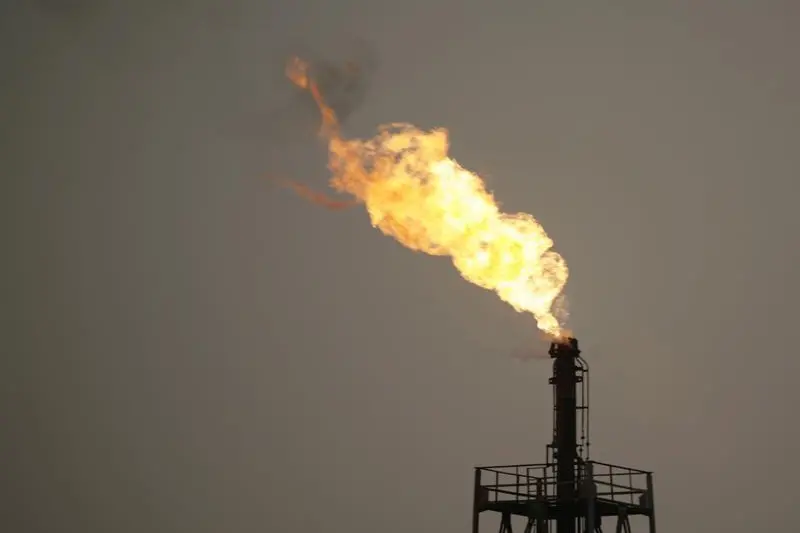PHOTO
The Ministry of Petroleum seeks to increase the local gas production to about 8bn cubic feet per day (scf/day) by the fiscal year (FY) 2020/21, compared to 7bn scf/day currently.
A source in the petroleum sector told Daily News Egypt that Egypt has gas surplus of 1.3bn scf/day, which is directed for export through the Idku liquefaction plant and the Egypt-Jordan gas pipeline. He added that the development plans of the new discoveries will increase gas production to 7.5bn scf/day in the second half of FY 2019/20, and the surplus will rise to about 1.5bn scf/day.
The source pointed out that gas consumption in Egypt rises by about 5% annually, including power stations, factories, cars, and households.
He explained that natural gas projects currently under development would increase the production to about 8bn scf/day by the next fiscal year, and would stabilise production rates until 2024, while compensating for the natural decline of fields, with a surplus of up to 2bn scf/day.
The source added that the surplus from domestic consumption will be exported through the Idku and Damietta liquefaction plants and the Egypt-Jordan gas pipeline, in addition to starting to transferring gas from Israel to Europe.
He pointed out that the Ministry of Petroleum is seeking to expand the establishment of value-added industries, including petrochemicals, which are based on derivatives of natural gas produced locally, which would achieve an additional return for the country from its export to global markets.
The source said that these plans are based on current petroleum discoveries, and they are subject to change if any new gas discoveries were made by the companies operating in the areas of research and exploration in different places in Egypt.
He pointed out that the average cost of one million British thermal units of natural gas produced locally in accordance with the development agreements is $4 without calculating the state’s share of gas produced locally.
The government will review gas selling prices to the industrial sector periodically, in line with global pricing changes, in addition to granting incentives to factories to encourage investors to expand their production capacities.
The source said the current government plan seeks to create new industries based on natural gas to benefit from the large productive capacities that Egypt has achieved, which contributes to increasing national income and providing many job opportunities.
The gas consumption of the electricity sector represents 61% of the total consumption, while the rest of sectors, such as industry, household, and cars, represent 39%.
A report issued by the Egyptian Natural Gas Holding Company (EGAS) revealed that 58% of gas production in Egypt is produced from deep-water gas fields in the Mediterranean Sea, equivalent to about 4bn scf/day during the past fiscal year.
The report indicated that the Delta concession areas produce 20% of the local gas, equivalent to 1.38bn scf/day. The production capacity of the gas fields in the concession areas of the Western Desert was 1.38bn scf/day, equivalent to 20% of the total domestic production.
The report added that 2% of Egyptian gas production is produced from the fields of the Gulf of Suez, Sinai, and the Eastern Desert.
The source pointed out that the new projects that have been linked to production such as Zohr, Noros, North Alexandria, Baltim, contributed to raising Egypt’s gas production to unprecedented rates.
The source pointed out that the rate of natural gas consumption in the local market is growing annually, according to the urban and industrial development plan, and with the increase in the number of cars that run on natural gas.
The Ministry of Petroleums plan aims to complete the implementation of the Zohr, North Alexandria and Burullus fields to contribute to increasing domestic production and covering consumption rates, while operating liquefaction plants through gas coming from Cyprus and Israel.
2019 Daily News Egypt. Provided by SyndiGate Media Inc. (Syndigate.info).












